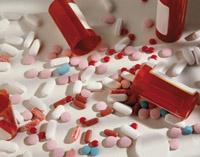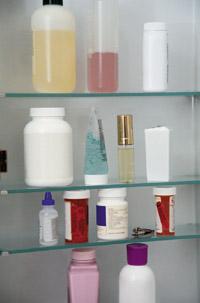Generic: is it just a matter of fashion?
Many broad questions. In this work today I will try to respond to them and others. We go slowly.

When the new drug is first found or discovered (after years of research and after spending a lot of money on this project), it is given chemical name or even code that will serve as a reference for researchers. The next step is the approval by the official health institutions in force in each country so that doctors can prescribe patients. And at this time it is given the name of generic (official) and commercial (also known as patent or trademark) that identifies that it belongs to a particular pharmaceutical company or laboratory.
With some examples it can be better understood. To cite some well-known medicines, such as Clamoxyl, is a commercial name given when marketing the laboratories “Smithkline Beecham”. But the generic of this drug, or active substance, of real pharmacological effect, is amoxizolnatrihydrate. And the commercial brands with amoxicillin trihydrate in the current Spanish market are many, since I thought it was too much, since all pharmaceutical pharmacies have tried to get their amoxicillin, after having paid very well the original patent to Smithkline Beechan, who obtained the original synthesis. And of course, as they then want to make profits, these “buyer” laboratories are forced to raise the price of the original substance.
Therefore, and in general, it can be said that the generic term represents the cheapest principle and, in most cases, the most used, and that in this case the lower cost does not mean that it has less quality and effectiveness, much less.

For the pharmacoindustry it is important to emphasize that not all medicines can be formulated as generic, since not all can be exchanged. Therefore, it is necessary to meet three fundamental requirements: bioequivalence with the original product, its identification with the acronym EFG (Generic Pharmaceutical Specialties) and its subsequent placing in the market of original or original specialties for at least ten years in order to formulate its generic.
There is often no exchangeable medicine because it is too difficult to duplicate or there is no evidence demonstrating its bioequivalence (that is, one acts like the other). This implies that the patient will find in the pharmacy more complicated generic names, which are more difficult to remember than commercial names (trade names are easy and eye-catching). But don't worry: generics in terms of their content are as safe as others, because for this it is the competent official health agency who must approve all generic versions of medicines or drugs. It is clear, therefore, that the new generic drug that arrives at pharmacies will always have the same effects as the original drugs of different trade names (since the active ingredients will be released in the body at the same speed and with the same capacity as the original ones).
Why are they different then?
According to the prestigious Merck Manual, when a pharmaceutical company decides to make a generic version of an original drug or medicine, its formulation experts employ the same active principles as the original drug when designing the generic product, but normally the inactive components are different. That is, they will add to the original active ingredients components that have not had any effect on the body, in order to increase the volume, for example, to make the pill large enough, or give it a taste and a pleasant color, or add the additives necessary to avoid the deterioration of the pill between manufacture and use.

Above these differences, studies and studies show that the real differences between approved generic drugs and commercial oral drugs do not exceed 10%. On the other hand, before using the generic drug, the patient should always consult the doctor and correctly verify the name of the active ingredient on the label. And, of course, you always have to leave aside self-medication, although before you received a similar generic in similar circumstances.
In addition, it may not be appropriate to replace a drug with a generic. It is the case of corticosteroid cream, lotions and touches (hydroortisone, mometarone, etc. ). The dosage of this drug has been established according to the response shown in the tests performed on the skin, reaction that can be modified in the same way that the effect or effect is modified with different presentations (such as gel or cream). Since the response cannot be predicted or calculated previously, a commercial drug should not be replaced with a generic one. In other cases (for example, drugs for treating high blood pressure, hormones, antidepressants, antiasthmatics, or in case of heart failure) generic versions do not seem equivalent to commercially named versions, so commercial drugs should not be replaced by generic ones. But this last type of reluctance is not unanimous, since for other experts there is no inconvenience from this perspective.





